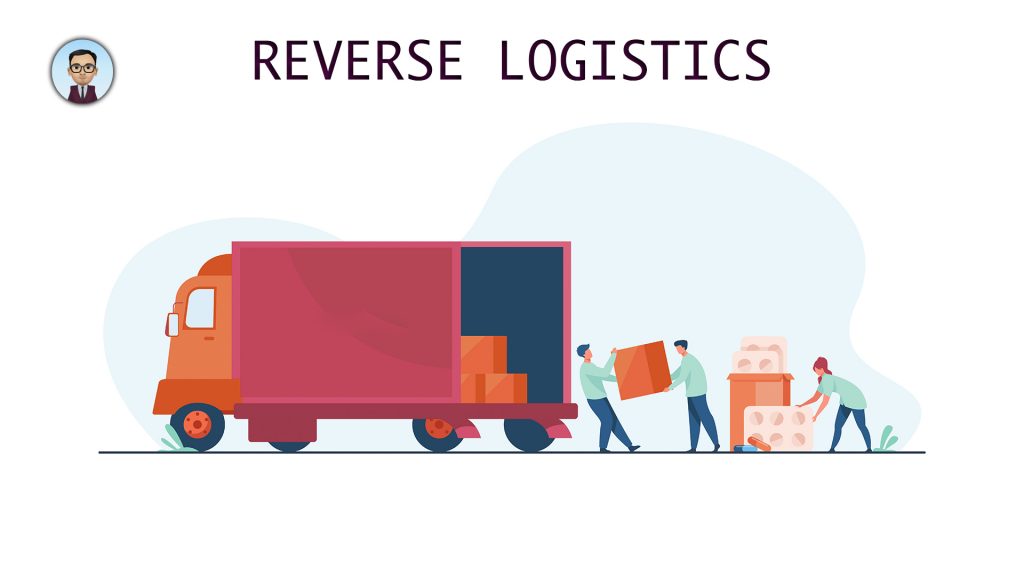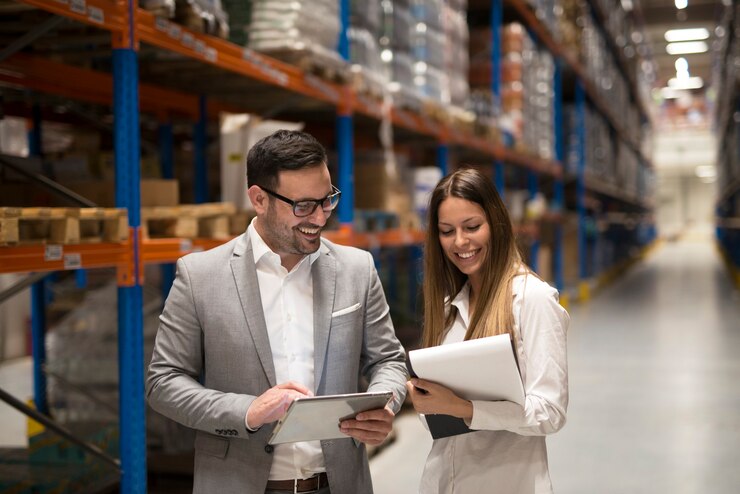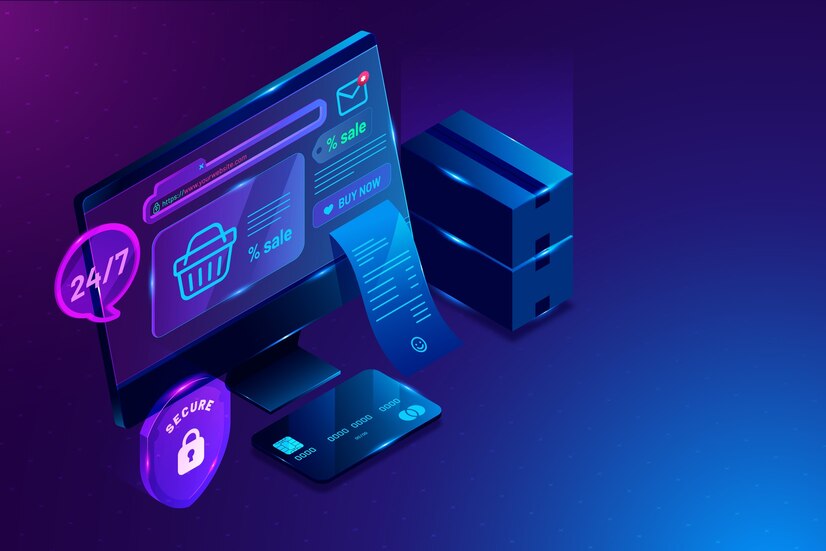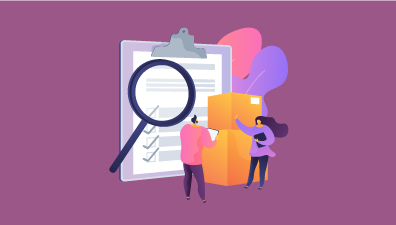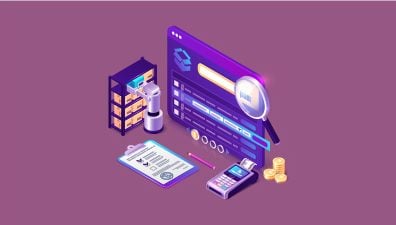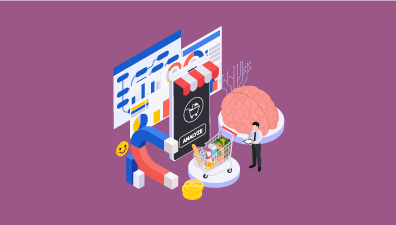In the world of business, there are many necessary components that keep things running smoothly. One of these important aspects is known as reverse logistics.
So What is reverse logistics? Contrary to what the name might suggest, reverse logistics isn’t about reversing the course of daily life. It’s actually all about getting products back to the manufacturer or distributor after they’ve been sold to consumers. Understanding how this process works and the different types of reverse logistics can help businesses streamline their operations and improve customer satisfaction.
In this blog post, we’ll break down everything you need to know about reverse logistics so you can apply it in your own business practices. Stay tuned!
Table of Contents
What Reverse Logistics is and How it Works
Reverse logistics is the process of moving goods from their final destination back to the supplier. It can be used for products that are defective, surplus, or returned by customers. Reverse logistics helps companies reduce costs, recover lost revenue, and improve customer service.
For instance, In the beverage industry, companies are using reverse logistics to keep their tap containers from being wasted. The process starts with producing beverages in bulk and then bottling or canning them for retail sale when they’re ready. This requires many steps, including planning transportation, managing shipping loads, and cleaning the containers.
There are 5 main steps in the reverse logistics process:
- Process the Return: When a consumer wants to return an item, they should be able with a process that includes providing identification and signing for the package. The company will then authorize your refund or replace any faulty goods in order of what’s been ordered from them before being sent back out again.
- Deal with Returns: To ensure that your products are both returned and recycled efficiently, you should consider using a centralized processing center. The first step in returning an item is inspecting it for any damage or stains on the exterior of whichever container was used when shipping
- Keep Returns Moving: Sending repairable products to the repair department might help you reduce your daily waste.
- Repair: After inspecting the returned item/equipment and assessing whether or not it can be fixed, it should be moved to the repair area.
- Recycle: Selling any sellable components should be attempted if feasible.
Successful Examples of Reverse Logistics
H&M
It is a clothing company that has used the “Reverse Logistics” idea in an innovative manner. H&M accepts gently used clothing from any brand, not only the H&M brand. It is from these previously owned garments that they make their entirely recycled apparel line.
Essentially, the goal behind this is to engage consumers with the brand not just via selling to them, but also through involving them in the brand by donating their old garments.
Apple
When it comes to an effective reverse logistics system, Apple is a shining example. Consumers who return to an Apple shop to purchase the most recent model are offered discounts on the new product in exchange for the return of their previous model.
Apple then takes the old models and returns them to their respective manufacturing facilities. Using this approach, Apple is able to reuse components from earlier models in future products, allowing the company to be more environmentally responsible while also saving money on manufacturing expenses.
UPS
UPS also effectively used reverse logistics to reduce its environmental impact by enabling customers to repurpose shipping boxes for the shipment of their own merchandise. UPS also offers recycling services, in which they will pick up items that are no longer required and dispose of them in an environmentally friendly manner.
Dasani
As an amazing example of reverse logistics, Dasani has set up Dasani Bottle Bins on college campuses around the country for the simple collection and recycling of their old goods. Dasani is able to collect and recycle the bottles because consumers deposit their empty Dasani bottles in the bins provided by the company.
Benefits of Reverse Logistics
Now that you’ve grasped the answer to what is reverse logistics, let us walk you through the next important part: how reverse logistics is beneficial to the developers and users. There are several benefits to implementing a reverse logistics process. With the right planning and execution, reverse logistics can provide a host of benefits to businesses.
Improved Customer Service: Reverse logistics helps companies improve customer service by providing a way to handle returns and recalls quickly and efficiently. This can help keep customers happy and reduce the number of negative feedback companies receives.
Improved brand image: When a company has excellent management and response capacity, it can provide better customer service. Also, if the material or product returned becomes part of the recycling chain, users will perceive respect for the environment, which is increasingly valued in society today.
Reduced Environmental Impact: Reverse logistics helps companies reduce their environmental impact by recycling waste materials and disposing of hazardous waste properly. In addition, efficient reverse logistics operations can help save energy and resources.
Increased Efficiency: Reverse logistics can be less efficient than traditional logistics operations due to the need to handle returns and recalls. However, technology has made reverse logistics more efficient in recent years, and there are several tips companies can follow to further improve efficiency.
Challenges Companies Face when Implementing Reverse Logistics
After deeply understanding what is Reverse logistics and how it affects your business, it’s important for a business to find out some challenges companies may face when implementing it. There are several challenges companies face when implementing a reverse logistics process:
Increased complexity: Reverse logistics adds complexity to the supply chain due to the need to track and manage returned products. Because there are so many uncertainties in returns and reverse logistics, it’s difficult for manufacturers to keep track of orders and manage information flow across silos. Many processes and systems are readily integrated into a multi-enterprise supply chain network platform that provides end-to-end visibility and control in such an environment.
Higher shipping costs: Shipping costs are often higher for reverse logistics due to the need to ship products back to suppliers. As a consequence of rising return volumes, corporations are having difficulty determining the extent of product failures or damage, and they are incurring additional expenses for repackaging and redistribution.
Longer lead times: Due to the necessity to examine and prepare items for transportation, reverse logistics lead times are sometimes higher than forwarding logistics. The processes for inspecting, repairing, and redelivering are completed in a timely manner. The number of product returns has climbed significantly in recent years all around the globe. It is estimated that one out of every three products bought online is done so just for the purpose of testing and comparing it before returning it.
The ecological issue: Reverse logistics has a close association with environmental protection since it is responsible for handling the goods, components, and materials that have been used or disposed of and for which the producer is liable in some manner. The accountable kind. Its major goal is to breathe new life into these items while also reducing the amount of trash that is generated in the process.
Tips for Overcoming these Challenges
There are several tips companies can follow to overcome these challenges:
Make sure the reverse logistics process is integrated with the rest of the supply chain: This will help ensure that all aspects of reverse logistics are coordinated and run smoothly.
Use a centralized warehouse: A centralized warehouse can help reduce shipping costs and lead times by handling all returns and recalls in one location.
Train employees thoroughly: Employees who are responsible for handling returns and recalls must be trained on how to do so effectively and efficiently.
Use technology to improve efficiency: Technology can help automate the reverse logistics process and improve overall efficiency. And Odoo will be the best solution for supply chain management operations. It is also free to use. The supply chain management parts of your organization will be efficiently configured in Odoo after you have completed this course. In addition, the Odoo platform will guarantee that product transfers are carried out correctly, resulting in the efficient administration of the items on the market. Additionally, be certain that you will have appropriate cash flow management for your activities.
The Future of Reverse Logistics
Reverse logistics is an important part of the supply chain and is expected to grow in importance in the future. Companies that are able to effectively manage returns and recalls will be well-positioned to succeed in the ever-changing retail landscape.
The future of reverse logistics is uncertain, but there are several trends that could have an impact on the industry. These include the growth of eCommerce, the rise of omnichannel retailing, and the increasing demand for sustainability.
eCommerce is growing at a rapid pace and is expected to continue to grow in the future. This will lead to more products being returned by customers, which will create a greater need for effective reverse logistics operations.
Omni-channel retailing is also growing in popularity and is expected to become even more common in the future. This will result in more products being shipped to and from stores, which will also create a greater need for effective reverse logistics operations.
The demand for sustainability is also increasing. This means that companies will need to find ways to reduce their environmental impact, which could include recycling waste materials and properly disposing of hazardous waste.
In conclusion
Hopefully, you have gained some useful knowledge about what is Reverse Logistics after reading this post. By understanding how reverse logistics works, you can make sure your company is taking full advantage of this necessary system. If you’re interested in learning more about reverse logistics or need help with other inventory issues, contact us today. We’d be happy to chat with you and see how we can help get your products moving in the right direction.


